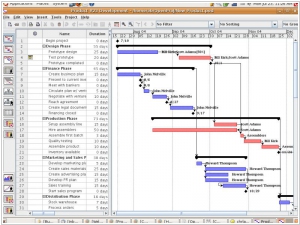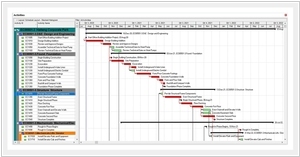Microsoft Project vs Oracle Primavera
March 15, 2025 | Author: Adam Levine
25★
Microsoft Project is a project management software program developed and sold by Microsoft which is designed to assist project managers in developing plans, assigning resources to tasks, tracking progress, managing budgets and analyzing workloads. The application creates critical path schedules, and critical chain and event chain methodology third-party add-ons are also available. Schedules can be resource leveled, and chains are visualized in a Gantt chart.
7★
The Standard for Planning and Scheduling. Manage projects of any size with Primavera P6 EPPM. Robust, and easy-to-use, Primavera P6 EPPM is the solution for globally prioritizing, planning, managing, and executing projects, programs, and portfolios.
Microsoft Project and Oracle Primavera are two sophisticated pieces of software designed to make project management easier or at the very least, make it feel like you're managing something. Both offer a dazzling array of charts, timelines and reports that can convince anyone in the room that things are under control. They both allow you to allocate resources, track progress and generally give the impression that everything is moving forward according to plan, even when it absolutely isn’t. Most importantly, they both integrate seamlessly with other expensive software, ensuring that no single budget will ever escape unscathed.
Microsoft Project, being a product of the great and omnipresent Microsoft, is designed to be used by anyone who has ever accidentally opened Excel and thought, "Ah yes, I can do this." Released in 1984, it quickly became the go-to tool for managers who needed to look busy while their teams did all the actual work. Its interface is friendly or at least as friendly as a piece of software dedicated to deadlines and resource constraints can be. Naturally, it integrates perfectly with everything Microsoft has ever made, which is excellent news for those who enjoy the occasional unplanned Teams meeting.
Oracle Primavera, on the other hand, is a different beast entirely. Born in 1983 and later absorbed into the Oracle empire, it is designed for people who manage projects so large and complex that they require a small army of consultants just to understand the interface. It is most at home in the world of megaprojects—bridges, skyscrapers and government endeavors that will take decades to complete and twice as long to pay for. Primavera is powerful, precise and entirely unapologetic about its complexity, which is precisely why large enterprises love it. It integrates seamlessly with Oracle’s vast array of enterprise tools, meaning that if you are using it, you are probably already in too deep to turn back.
See also: Top 10 Project Portfolio Management software
Microsoft Project, being a product of the great and omnipresent Microsoft, is designed to be used by anyone who has ever accidentally opened Excel and thought, "Ah yes, I can do this." Released in 1984, it quickly became the go-to tool for managers who needed to look busy while their teams did all the actual work. Its interface is friendly or at least as friendly as a piece of software dedicated to deadlines and resource constraints can be. Naturally, it integrates perfectly with everything Microsoft has ever made, which is excellent news for those who enjoy the occasional unplanned Teams meeting.
Oracle Primavera, on the other hand, is a different beast entirely. Born in 1983 and later absorbed into the Oracle empire, it is designed for people who manage projects so large and complex that they require a small army of consultants just to understand the interface. It is most at home in the world of megaprojects—bridges, skyscrapers and government endeavors that will take decades to complete and twice as long to pay for. Primavera is powerful, precise and entirely unapologetic about its complexity, which is precisely why large enterprises love it. It integrates seamlessly with Oracle’s vast array of enterprise tools, meaning that if you are using it, you are probably already in too deep to turn back.
See also: Top 10 Project Portfolio Management software




